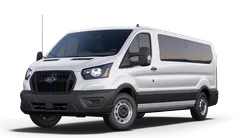

Ford Transit Generation 3 Overview
Explore the Ford Transit Generation 3, a reliable and versatile vehicle option in Portugal. Learn about its features, specifications, and benefits for your needs.
The Ford Transit is a versatile van that has captured the attention of businesses, families, and adventure-seekers alike. The third-generation Ford Transit, introduced in 2000 and produced until 2013, marked a signific...
Technical Specifications
Select Version
Dimensions
Engine
Driving
Others
History and Features
Mycarro AI
Apr 26, 2025
The Ford Transit is a versatile van that has captured the attention of businesses, families, and adventure-seekers alike. The third-generation Ford Transit, introduced in 2000 and produced until 2013, marked a significant evolution in the Transit lineup. This model was known for its practicality, modern design, and robust performance, which catered to a wide array of commercial and personal transportation needs.
Design and Dimensions
The Generation 3 Ford Transit featured an updated design that retained the signature Transit characteristics while embracing more modern aesthetics. The van's boxy silhouette was complemented by smoother lines and a more aerodynamic shape, aiding fuel efficiency. The vehicle offered various lengths and heights, accommodating different payload capacities and interior spaces. Buyers could opt for short, medium, or long wheelbases, as well as low or high roof variants, making it adaptable for various uses, from delivery vans to camper conversions.
Engine Options and Performance
Under the hood, the third-generation Ford Transit provided a range of reliable and efficient engine options. Depending on the market, buyers could choose from numerous diesel and petrol engines, including 2.0-liter and 2.4-liter TDCi diesel engines. The engine lineup was geared towards optimizing performance while maintaining fuel efficiency, catering to both urban environments and long-distance travel. The addition of an automatic transmission option also made driving the Transit more convenient, particularly in congested traffic conditions.
Interior Features and Comfort
The interior of the Generation 3 Ford Transit was designed with user comfort and practicality in mind. With ample cargo space, the van could be configured for various commercial uses, from cargo transport to mobile workshops. Upfront, the driver’s area was functional, featuring a straightforward dashboard layout with easy-to-reach controls. Over the years, upgrades were made to the interior materials and features, introducing enhancements such as air conditioning, improved seating options, and modern infotainment systems. This made the Transit not only a work vehicle but also an enjoyable space for long journeys.
Versatility and Customization
One of the hallmark features of the Ford Transit Generation 3 was its versatility. Businesses could customize the van extensively, opting for various shelving units, partitions, and equipment setups that suited their specific operational needs. The Transit became a popular choice for tradespeople, delivery services, and logistics companies, as its adaptability could turn it into almost any type of work vehicle. Furthermore, the vehicle’s cargo area was engineered for easy access, with options for side sliding doors and rear double doors that could be opened to a wide 180 degrees.
Safety Features
Throughout its production run, safety was a fundamental concern for Ford. The Generation 3 Transit incorporated various safety features that evolved over time. Early models offered dual front airbags and an Anti-lock Braking System (ABS), while later versions added additional safety technology, including electronic stability control and advanced braking systems. The sturdy chassis and low center of gravity of the Transit further enhanced the vehicle's stability, making it a safer choice for transporting goods and passengers.
Popularity and Legacy
The Generation 3 Ford Transit garnered a loyal following in numerous markets across the globe. Its combination of practicality, performance, and comfort made it a go-to choice for numerous industries, from delivery to construction and beyond. In the UK, it became synonymous with the term “white van man,” highlighting its cultural significance in the realm of commercial vehicles. As the vehicle paved the way for future Transit generations, its legacy continues to influence the design and functionality of modern vans on the road today.
Conclusion
In conclusion, the Ford Transit Generation 3 stands out as a pivotal model in the lineage of Ford's van offerings. Its thoughtful design, range of engines, and extensive customization options have helped it become a versatile vehicle for countless users. The continued popularity of the Transit, well beyond its production years, truly underscores its place in automotive history.
